People from all around the world love London – one of the most visited cities on the planet, home to world-renowned tourist attractions, sights, architecture, and of course the British royal family. Throughout its 2,000 years, the London skyline has been pierced by hundreds of landmarks and structures that are the signature of the city. Every great city has monuments that act as their icons, like the Petronas Twin Towers in Kuala Lumpur, the Eiffel Tower in Paris, and the Colosseum in Rome. So here are the iconic landmarks of London.
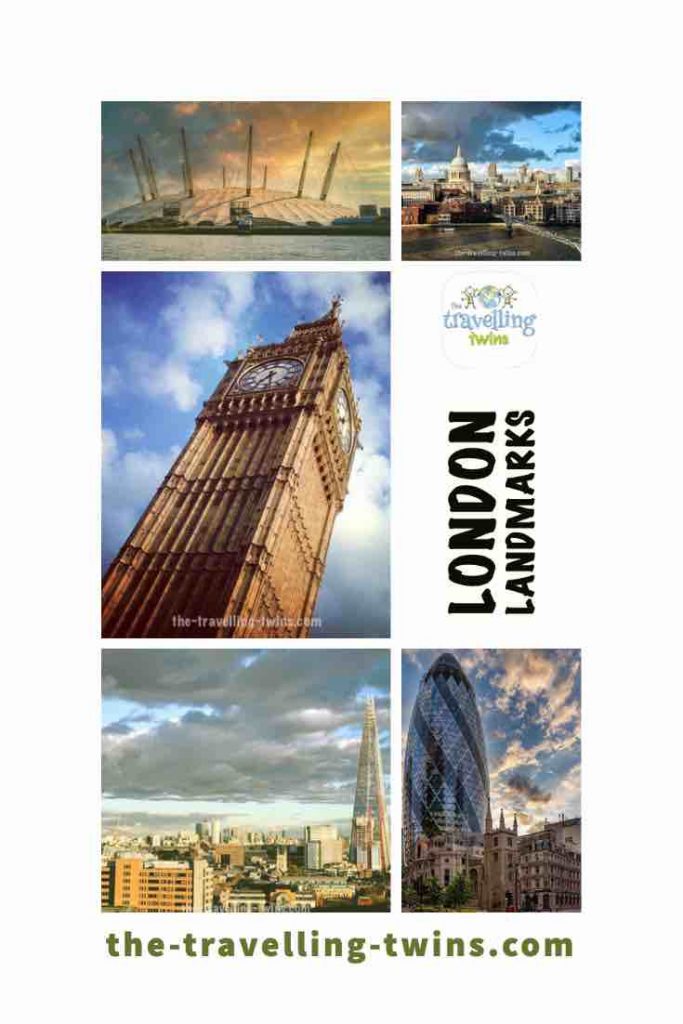
London has more landmarks and famous sites than any other major city in Europe if not the world. For two centuries, London was the richest city in the world as the hub of an empire that stretched all around the planet and across every continent. London is the 3rd most visited city in the world and 3rd largest city in Europe.
These iconic landmarks and monuments are almost all bunched together in or around the city centre, making it easy to explore the capital with kids on foot and public transport.
Below is a list of the most famous landmarks in London. There are many more than this, of course, so please do comment if you think we have missed any of your favourites.
Big Ben and the Houses of Parliament
Big Ben is perhaps the most famous icon of London. Almost every film with a scene set in London will introduce the location a shot of Big Ben taken from the River Thames.
Big Ben is actually the name of the great bell which chimes the hours inside the clock tower of the Palace of Westminster but the tower itself has come to be known by the name. More in Facts about London This Palace was constructed in 1859 for the House of Commons and the House of Lords, as a meeting place Palace of Westminster is the meeting place of the Parliament of the United Kingdom.
The building including the tower was designed by AWN Pugin who was at that time more famous for his writings. Pugin believed that the “pointed” architecture of Christian Churches – was morally superior to the classical styles popular at the time. No surprise then that the entire Gothic Revival building is decorated to copy English mediaeval church design.
The Palace of Westminster has been a UNESCO World Heritage Site since 1987. Currently, the building is in scaffolding and this is nothing new, there has been no time since it was built that at least some part of the building has not been scaffolded for repairs.
The 300 ft tower, designed by English architect Augustus Pugin, features four clock dials 23 feet in diameter. Despite being renamed the Elizabeth Tower for Queen Elizabeth II’s Diamond Jubilee, the clock tower is still known as Big Ben. No trip to the City of Westminster would be complete without stopping by at this famous landmark building.
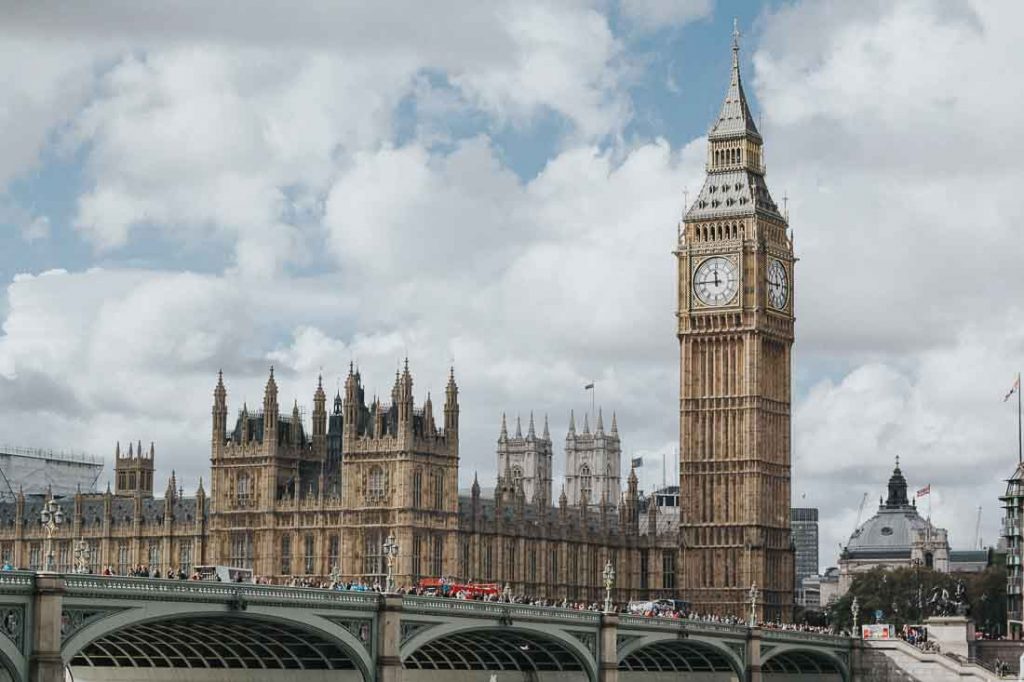
Westminster Abbey
Westminster Abbey in London has been a coronation church and burial site for English monarchs since the 11th century. The abbey is also known as “Coronation Church” because it’s where every single British Monarch, including Queen Elizabeth II, was crowned over 1000 years ago! Since then, Westminster has had 16 Royal weddings – most recently Prince William and Kate Middleton’s 2011 wedding as well as Prince Charles wedding, which were held there too. The Westminster Abbey was founded in 960.
Tower Bridge
Another structure synonymous with London, Tower Bridge, is again a piece of Victorian architecture decorated in Gothic style. Like its stylistic parent it is also located on the River Thames – the second longest river in the UK, a couple of miles downstream. This is one of the most famous bridges in London.
Tower Bridge is a massive feat of cast iron engineering forming the gateway to the city from the port which brought London vast wealth from its global empire. The two moving bascules weigh more than a thousand tons each and rise to an angle of 86 degrees allowing large boats to pass underneath – taking about three or four minutes for the full open-close cycle.
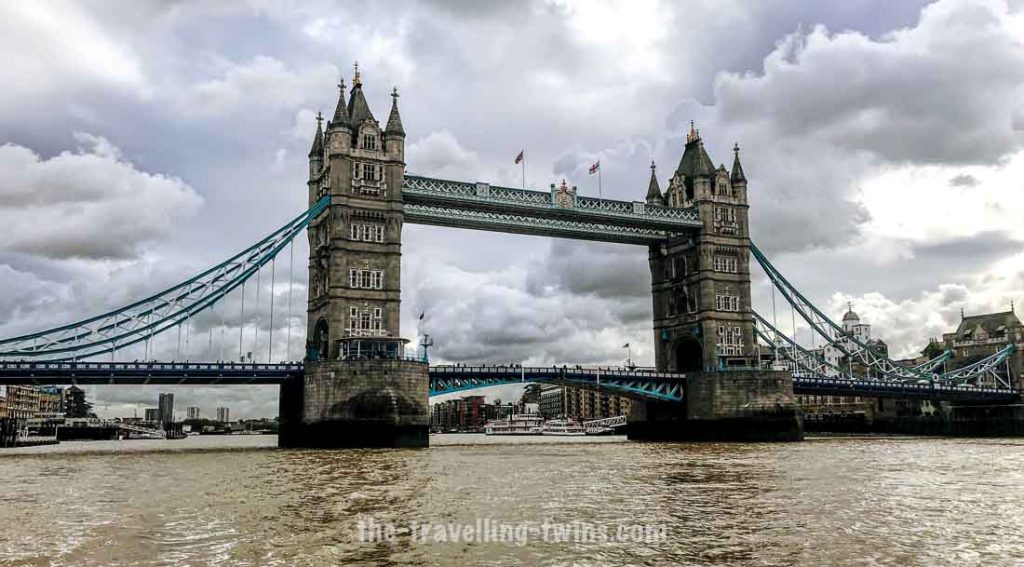
The bridge is so famous as an icon of London that it is often mistakenly called London Bridge, but the old London Bridge was a stone bridge farther upstream that was taken down block by block and relocated to Lake Havasu City in the United States in the 1960’s
Tower Bridge can be crossed by both pedestrians and vehicles, while the two towers and the high-level walkway, along with Victorian engine rooms belong to the Exhibition. Despite its two towers, Tower Bridge was named for its site, adjacent to the Tower of London, where the crown jewels are kept.
Tower of London
The Tower of London is the world’s most famous fortress and a must-see for all visitors. The historic landmark was built in the 11th century as one of England’s first royal castles to keep enemies out—and has never let anyone down yet!
Buckingham Palace
There have been hundreds of palaces across Britain used as official royal residences and the headquarters; however, Buckingham Palace at the end of The Mall is the top dog and the official residence of the monarch.
Originally known as Buckingham House, the palace was built on the site of a large townhouse that stood on the site since 1703 belonging to the Duke of Buckingham. The first monarch to live there was the Empress Queen Victoria.
It is one of the largest building complexes in London, boasting over 7,600 windows and more than 1500 doors. Visitors can tour the Royal Palace, though it is open to the public only between July and October.
St. Paul’s Cathedral
St Paul’s Cathedral is located on Ludgate Hill, which is the highest point of the city and is surrounded by the glass and concrete towers of the modern financial district. Cathedral was a place of worship for over 1400 years. The current building was designed by Sir Christoper Wren, who was entrusted with the creation of a new cathedral and 50 churches after the Great Fire of London in the 17th century. The dome of St Paul’s was the tallest structure in London until 1963; standing at 111 metres, and even today, it is one of the tallest domes in the world.
Trafalgar Square
This public space with Nelson’s Column was dedicated in the early 19th century to commemorate the Battle of Trafalgar that took place in 1805 off the shoreline of Spain. Immediately to the south of the square is a traffic island called Charing Cross which is the central point of London from which all road distances are measured.
There are several statues in Trafalgar Square and of course the main one is Admiral Nelson, who led the navy to victory at Trafalgar. The three-times larger-than-life monument stands on a 46m classical column, flanked by four magnificent bronze lions.
Trafalgar Square is not only a great place to relax and the heart of London; it is also a place where you and your kids can learn some of the city’s well-kept secrets. For instance, the eastern corner of the square features a tiny pillar with a door. This is the smallest police station in the city of London.
National Gallery
The National Gallery in London is home to over 2,300 paintings dating from the mid-13th century all the way up through 1900. It has been open since 1824 and offers visitors a fantastic chance to see some of Europe’s most famous works of art.
The Gallery is an iconic landmark in Trafalgar Square.
Hyde Park
Covering 350 acres, Hyde Park is the largest Royal Parks in central London attached to Kensington Palace is not so much a landmark but the city’s great green lung. The history of the park dates back to the 16th century when it served as private hunting grounds for Henry VIII. Hyde Park is believed to be the oldest park in London and since it was opened to the public centuries ago, it has been home to thousands of protests and concerts, not to mention public hangings. Traditionally the May Day celebrations were held here.
You can take a walk on the many paths or skate, cycle, or sunbathe. You can even hire a deckchair. One of the most popular activities at the pack for both locals and tourists is boating on the manmade Serpentine Lake.
The Natural History Museum
Immediately south of Hyde Park is a district called South Kensington where some of London’s best known museums are lined up within a stones’ throw of each other. The Victoria and Albert is London’s museum of Art and Design, whilst the other two are described by their names: the Science Museum and the Natural History Museum. You can visit all three for free! Our favourite is the Natural History Museum displaying the 25metre skeleton of a blue whale suspended from the ceiling of its vast Victorian vestibule.
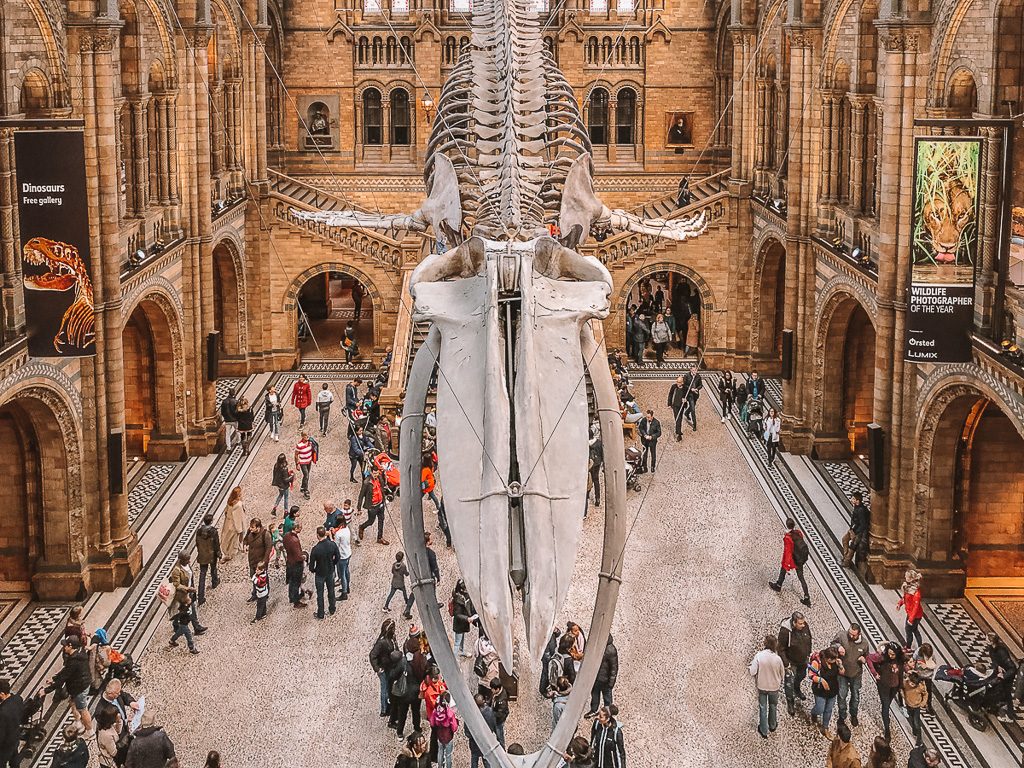
The British Museum
Located farther away in Bloomsbury, the British Museum is another of the most recognizable landmarks in the city, and with a permanent collection of eight million works, it is without a doubt one of the largest and most comprehensive museum collections ever.
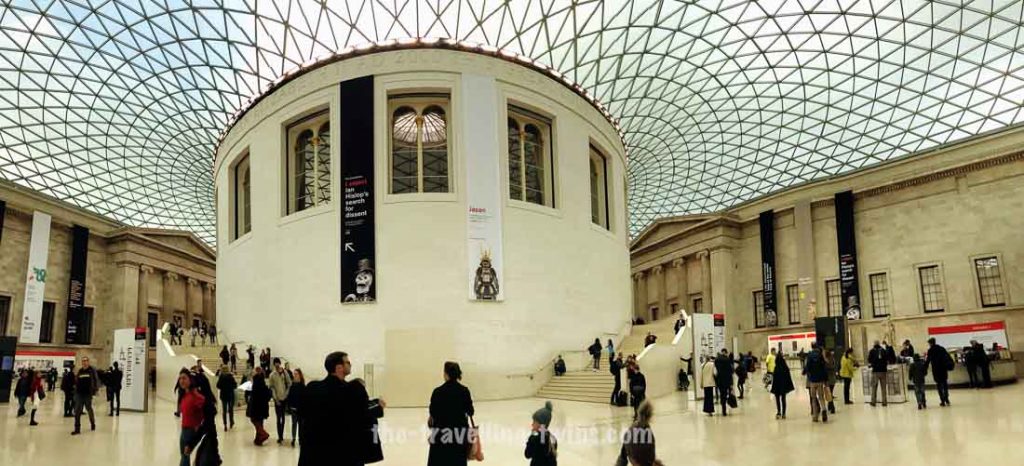
The British Museum is an interesting and beautiful building with a sunlit courtyard (Great Court) under a modern glass roof – the largest covered public square in Europe. One of the strangest items in the collection is the world’s oldest customer complaint, from Babylon more than 3,700 years ago.
Tate Modern Gallery
London’s air until the 1960’s was notoriously polluted by coal smoke which used to cause fogs so dense they were known as “pea soupers.” Until the late twentieth century the city’s electrical power came from steam turbines driven by coal-fired furnaces located in city-centre buildings with tall chimneys. The most famous of these was the Bankside Power Station located on the Thames south bank just opposite St Paul’s Cathedral.

It was decommissioned in the 1980’s and converted to house the modern art collection of the Tate Gallery. Tate Modern has been enormously popular and a great success from the day it was converted from a disused power station.
The Millennium Bridge
The London Millennium Footbridge, is an ultra-modern pedestrian bridge supported by a web of tensioned steel cables. It spans the Thames between Tate Modern Gallery and the City of London. Opened in 2000, it immediately received the nickname of the “Wobbly Bridge” and was closed for strengthening despite the designers’ protestations that it was completely safe.
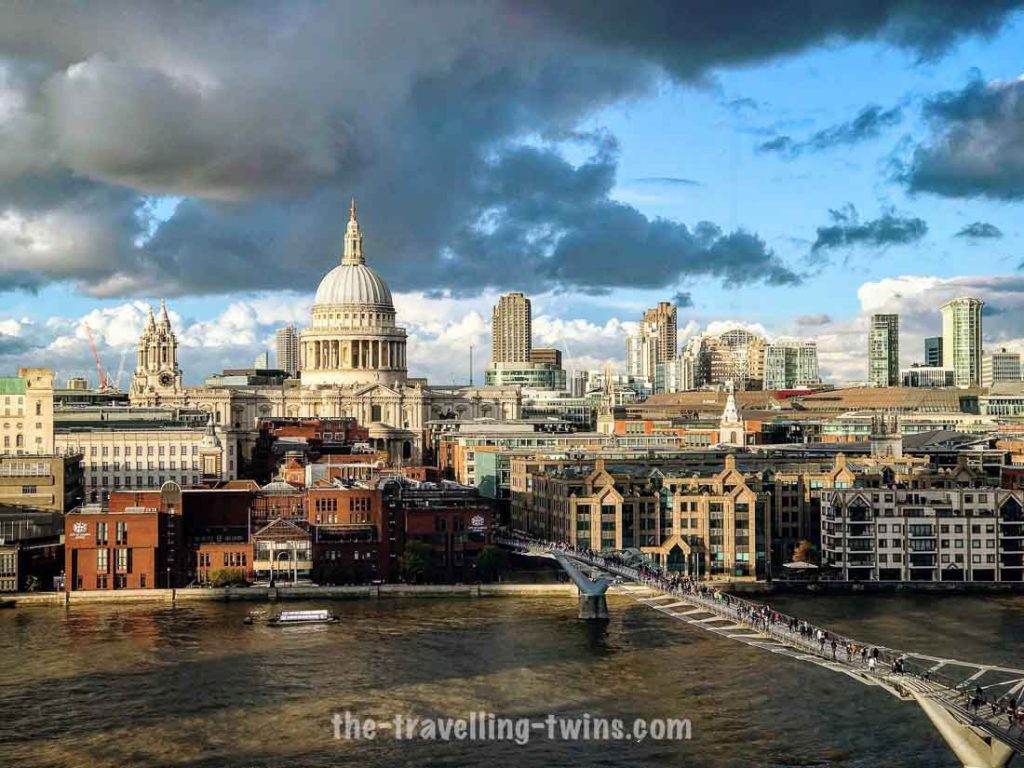
The bridge was the first Thames crossing built in over 100 years. It is aligned with the dome of St Paul’s Cathedral, creating one of the city’s most photographed views combining ancient and modern.
The O2 Arena
Perhaps the world’s most easily recognised landmark from the air, the Millenium Dome was the second of three Landmarks featured here was built for the millennium. O2 arena includes 20 000 people concert hall, cinema and dining places. It was designed for a temporary exhibition known as “The Millennium Experience” The exhibition was plagued by delays and mishaps and was largely ridiculed in the popular press of the time.
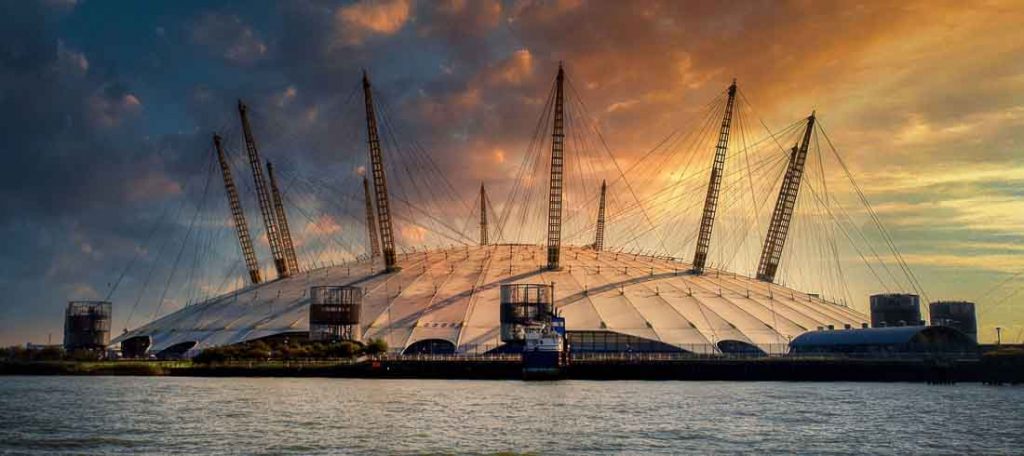
The Shard
At 72 stories skyscraper and over 300m height, the Shard of Glass, completed in 2012, is the tallest building in London and the 6th tallest in Europe. London has always boasted iconic architectural silhouettes on its skyline ranging from the concrete Barbican and the shiny steel Natwest Tower of the eighties to this glass pyramid – the latest and biggest of London skyscrapers. It stands on its own across the river from the Tower of London. The Shard’s form is best admired from across the river, but if you want to get up close for the highest view in London and you have £20 to spare, there is a public observation deck in Shard. The Shard is home to offices, hotel and various Restaurants.
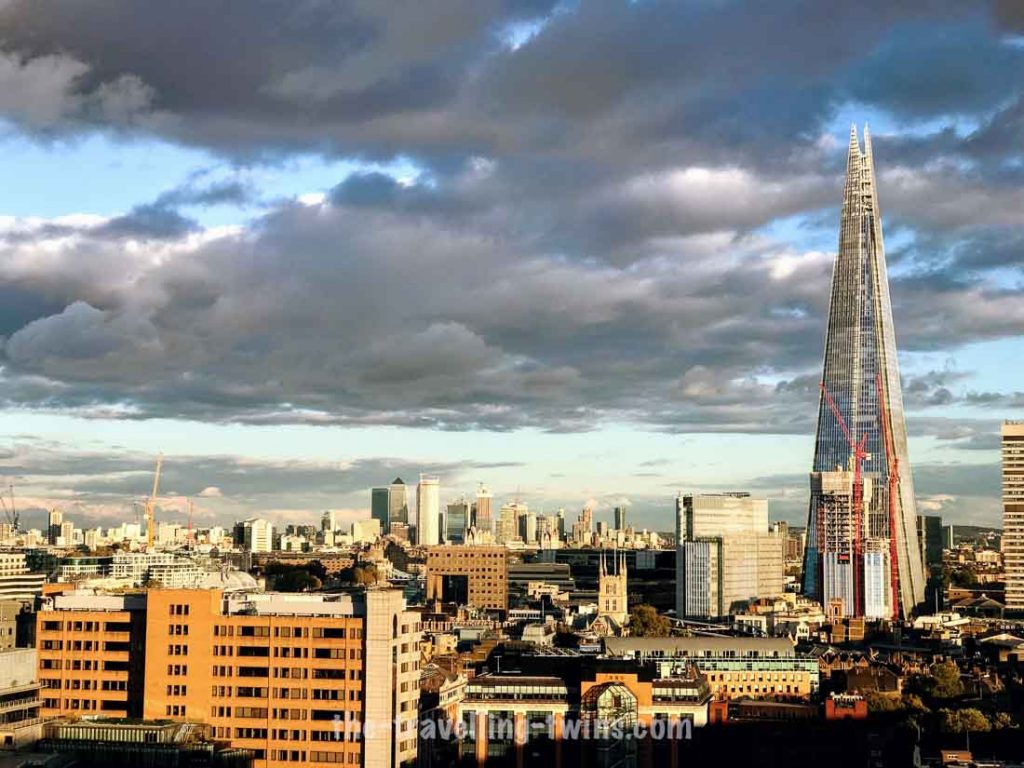
The Gherkin – 30 St Mary Axe
Not nearly so tall but perhaps more iconic and situated in the City of London financial district, the Gherkin is a bulging spiral geometrical 180 metre tower of 41 floors. It featured as a shooting location for at least half a dozen films including Woody Allen/Scarlett Johannsen’s “Match Point” Ridley Scott/Russell Crowe’s “A Good Year” as well as “Harry Potter and the Half-Blood Prince” and more recently “Thor: The Dark World”
The Gherkin was designed by Norman Foster and earned its architect the Stirling Prize for Architecture in the first-ever occasion in which all the judges were unanimous. It has also been voted the Most Admired New Building in the world (BD 2006)
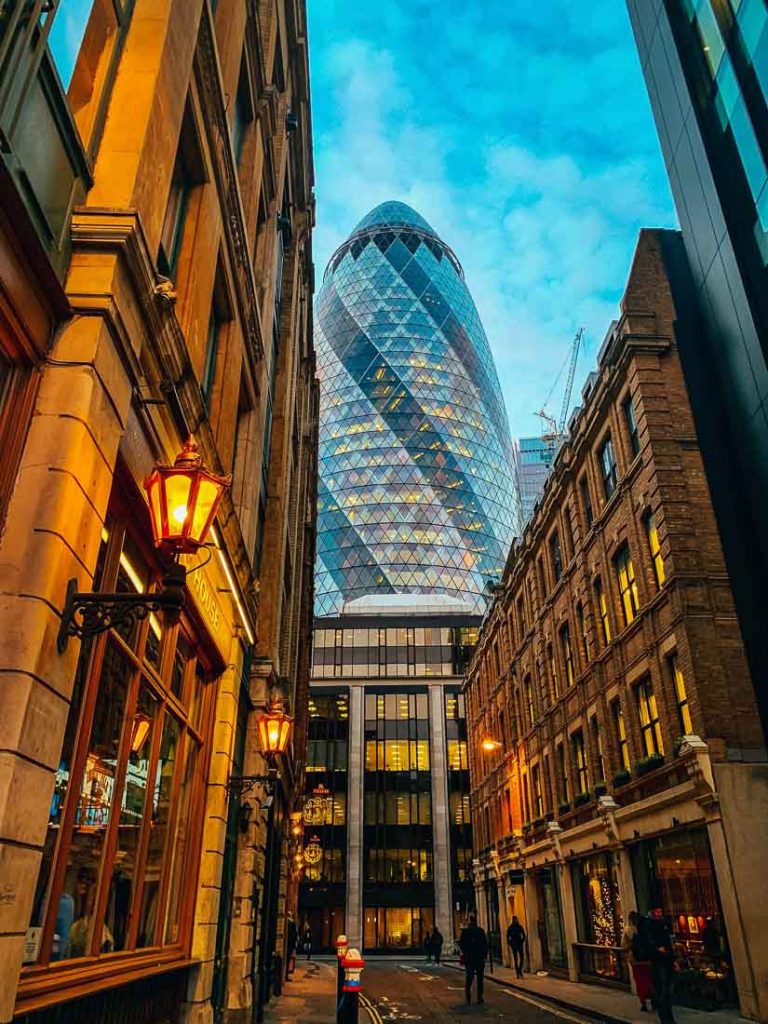
London Eye
This is the vast observation wheel on the South Bank of the river, just across and a little downstream from the Houses of Parliament. Attracting over 3,000,000 visitors a year, the London Eye is the most popular tourist attraction in the UK. Like the O2 dome and the Millennium footbridge, it was created to celebrate the turn of the third millennium but it opened a few days late owing to a technical problem in one of the pods. Like the Eiffel Tower, it was designed for a short life, and the site was only leased for five years, but The London Eye immediately became such a success that imitators have since sprung up around the globe including examples in Dubai, Las Vegas, Singapore, Japan and Taiwan. Ferris Wheel is one of the most popular attractions in London so book the tickets in advance.
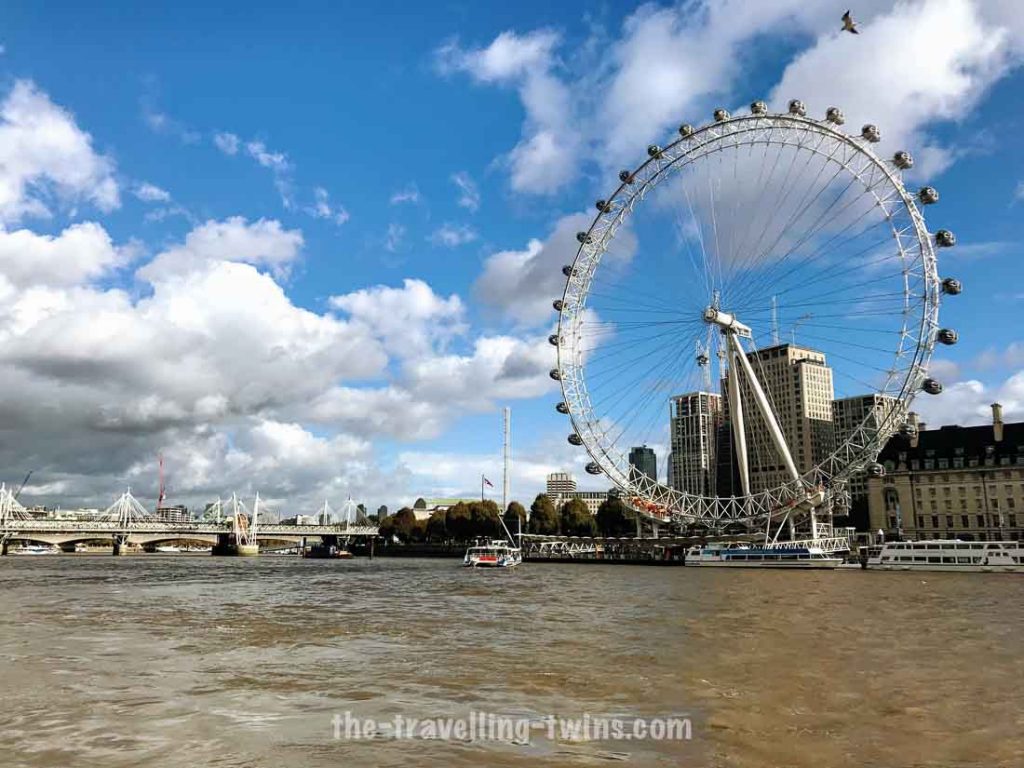
The Globe Theatre
Shakespeare’s Globe Theatre in London is a cultural landmark and famous for being the theatre where Shakespeare’s plays were first performed. The original building was built back when it opened in 1599 by his company. A current Globe Theather building opened in 1997 is the replica of this iconic venue which got burn in 1615, then got rebuild and again demolished has been constructed 750 feet from its location.
Royal Albert Hall
The Royal Albert Hall is a concert hall dedicated to Queen Victoria’s husband, Albert. It is located in central London – at the northern end of South Kensington. It may not be the most glamorous of concert venues, but it is one with a long history. Queen Victoria’s husband Albert was so well respected and loved that when he died in 1861 his widow built him this grand hall for charitable purposes.
The Royal Albert Hall has gone on to host concerts by some of England’s greatest talents from Jimi Hendrix to Elton John
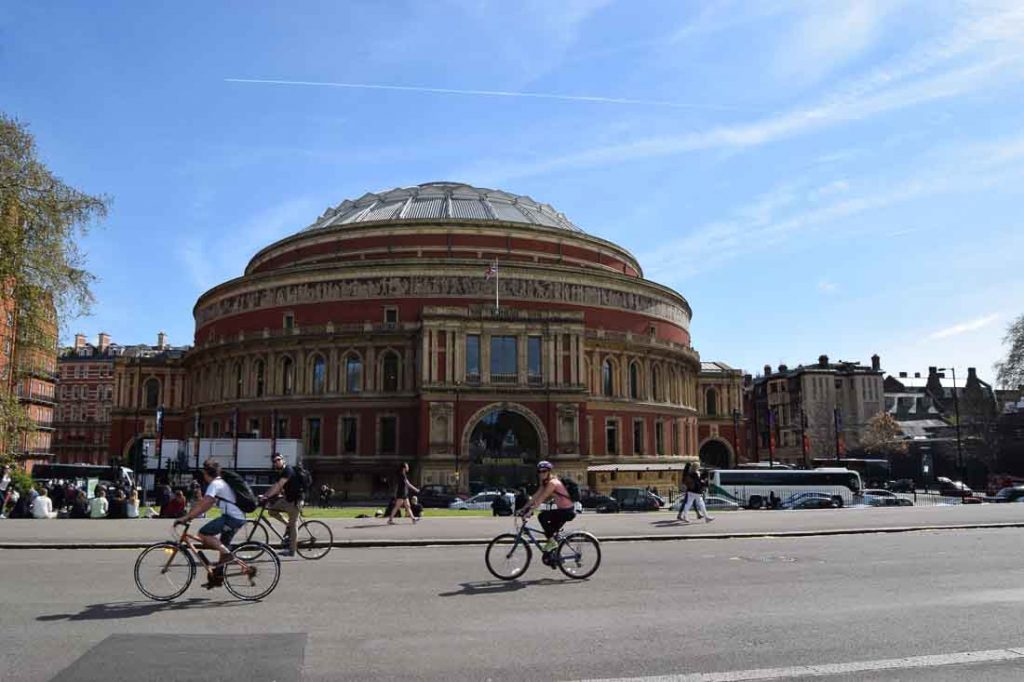
Piccadilly Circus and the Statue of Eros
London’s answer to Times Square is not a circus as we know it but was a traffic roundabout, surrounded by illuminated advertisements and located in theatreland. Originally the advertisements were semi permanent displays lit by incandescent bulbs, then neon lamps surrounded the circus with a dazzling lightshow . Gradually these coloured lamps were replaced with LED displays and now the whole thing is concentrated in a single vast (almost 800sqm) video screen.
During all these changes the centrepiece of Picadilly has remained – a tiny cast-aluminium statue of the love god – Eros, balanced on one leg and firing his mischievous arrows into the hearts of passers-by. No! Actually that’s not at all true. The statue is not of Eros but his brother Anteros representing the selfless love of the philanthropist Lord Shaftesbury to whom the statue is a tribute. And it is no longer in the centre of a roundabout. It was moved a few decades back and now stands beside a traffic crossroads – How times change!
Red Double Decker and the Red Phone Booth
The London’s double-decker bus is the most iconic aspect of London. It’s a symbol for tourists and natives alike, who love to ride them through the city in an effort to get that perfect photo-op you see all over social media.
Londons Landmarks – Pin Post for later




Privacy Policy Disclaimer
This website uses affiliate links for income and support.
If you like our website please consider using these links. You will be directed to the vendor, and we will get a small commission on your purchase price at no increased cost to you.
We have researched facts stated here as far as practicable but please check anything critical before committing your time and money. We do not claim any special knowledge or expertise, and we are not consultants for our readers.
All right reserved